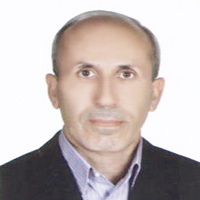Forecasting of recall rate in the screening program
Author(s):
A. Ordookhani , R. Mirmiran , Y. Mehrabi , A. Goldasteh , M. Padyab , P. Najafi , R. Hajipour , F. Azizi
Abstract:
Introduction
The recall of neonates with primary abnormal tests has almost always been considered the first step in the detection of congenital hypothyroidism (CH) in the CH screening programs. Considering recall rate as one of the indicators of cost-benefit and operational feasibility assessment of a program, forecasting of recall rate(s) could be beneficial to an optimized allocation of funds and resources. The trend of time-series of neonatal monthly recall rates was assessed in this report. Methods
From March 1998 to March 2002 (48 months), cord blood spot samples from 8 hospitals and a rural birth center in Tehran and Damavand District were collected on filter papers (Whatman BFC 180). TSH values were measured in the Endocrine Research Center laboratory using a two-site IRMA method. Primary TSH levels 20 mU/L were considered abnormal and recalled for serum confirmatory tests. Monthly recall rate (total number of primary TSH levels 20 mU/L to total live births per month 100) was recorded for 48 consecutive months. Monthly recall rates were analyzed using linear models of Box and Jenkins (ARIMA). The autoregressive model was fitted to forecast the next recall rates with a 95% confidence interval. Results
Out of 29908 cord blood spot samples, 314 showed TSH levels 20 mU/L (total recall rate of 1.05%) of whom 32 had CH (1: 935 live births). Total data showed normal distribution and were stationary. Fitting of particular type of AR(3) model showed that monthly recall rate is predictable according to the recall rate obtained three months ago. Therefore, the autoregressive model of zt = 0.67 + 0.45 zt-3 + et, with significant parameters (p 0.003), was obtained to forecast the next recall rates, ultimately. Conclusion
Forecasting of monthly recall rates is possible using the autoregressive model.Language:
Persian
Published:
Iranian Journal of Endocrinology and Metabolism, Volume:5 Issue: 2, 2003
Page:
133
https://www.magiran.com/p439444
سامانه نویسندگان
مقالات دیگری از این نویسنده (گان)
-
Vitamin D and Anti-thyroid Peroxidase Antibody: Tehran Thyroid Study
FS .Saeidian, F. Sarvghadi, A .Amouzegar, L .Mehran, S. Mahdavi, Y. Mehrabi, F .Azizi, H .Abdi*
Iranian Journal of Endocrinology and Metabolism, -
A comparative Study of How to Allocate Research Credit (Grant) to Faculty Members in Iranian Public Universities
Elahe Soleymanzadeh *,
Journal of Higher Education Letter, -
fMRI-Based Multi-class DMDC Model Efficiently Decodes the Overlaps between ASD and ADHD
Zahra Zolghadr, Seyed Amirhossein Batouli, Hamid Alavi Majd, Lida Shafaghi, *
Basic and Clinical Neuroscience, May-Jun 2024 -
Providing a model for improving the quality of teacher-student interaction in the virtual education system of universities
*, Shahin Homayoon Arya, Fatemeh Ghafouri
Journal of Educational Planning Studies,



